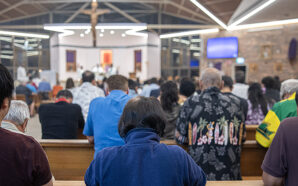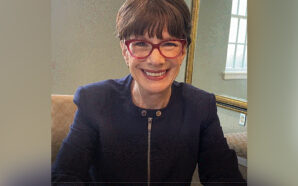At the end of the 19th Century, the famous novel, “The Heart of Darkness” by Joseph Conrad was published. Its stark title captures in an extreme way human corruptibility, and the darkness such a desperate state contains.
In complete contrast to this tragic human narrative, Jesus through His resurrection, transcends what appears to be an inevitable spiralling into darkness. The human journey made by Jesus through all the forces of darkness – betrayal, torture, suffering, and death – led Him to the “Heart of Light”, experienced in His Resurrection.
This triumph of light over the forces of darkness and despair in the pit of human suffering, is as St Paul reminds us, the cornerstone of our Christian faith (1 Cor 15:14).
In all our human searching, especially in and through our relationships, the motivating force which fuels our quest, is to get to the heart of things. There is a restlessness in the human heart which keeps us probing, seeking, searching. St Augustine in the 5th Century captured this deep longing in his words, “our hearts are made for you O Lord and they are restless until they find their rest in you”.
This movement of the human heart is threefold – upwards, outwards, and inwards.
While all the accounts of the Resurrection are described in physical places and time, they are essentially capturing profound experiences of the heart born from deep grief and loss. Furthermore, such experiences are not material things which one can cling to and hold tightly to oneself. Instead, in these Resurrection narratives, we witness in the disciples an overflow of the heart, with an impulse to share and gather more people into their experiences of hope. Even in their diversity of contexts, all the accounts of the Resurrection speak of hearts being surprised and awakened. When the Emmaus disciples recall their encounter with the Risen Jesus, they exclaim “Did not our hearts burn within as he walked with us on the road”. (Luke 24:32). Such “burning within” is a way of capturing and re-kindling the hope which transforms the despair experienced in darkness and loss.
Easter and our world in 2024
Throughout our Liturgical year and particularly in this season of Easter, we read and contemplate the accounts of the Resurrection of Jesus. So how does this pivotal event of our Christian faith which occurred historically over 2,000 years ago, continue to give meaning to each of our lives in this early part of the 21st Century? Almost daily we witness, “the extensions of Christ’s body” being crucified through torture, bombing, homelessness, and exploitation, in so many parts of our fragile world. There are many times when watching graphic television reporting from war zones we feel we are gazing into the “heart of darkness”.
What is our Christian response to such global pain and darkness? In discerning this, it may help us to recall the words of the poet Gerard Manly Hopkins when, in one of his poems he uses the word, “easter” as a verb – a doing word! This alerts us to the twofold nature of Easter. In remembering and celebrating this pivotal historical event, we open ourselves to the rising of life from death, happening in the heart of our present-day lived experiences.
As with the first witnesses to the Resurrection of Jesus, we are invited to allow ourselves to be surprised by the touches of the Risen Jesus within our human experiences. It is good to remember that the first Easter was experienced in the ordinary events of one’s life; having a meal, walking along a beach, being in the garden, even in the workplace of fishing! Furthermore, it is obvious that the Risen Lord transcends human boundaries imposed by space and time.
The Easter narrative is our human/divine story. We are called to live it every day as we radiate light flowing from the gift of grace in both the ordinary and extraordinary events of our lives. Such a way of being, enables the Resurrected Christ to “easter” in us. It is in the daily rhythm of our own “living and dying” that Christ rises.
May we continue to commit ourselves to journey into the “heart of light”, keeping our focus on Jesus, the one who in taking flesh, makes his home with us; and who, “the darkness can never overpower” (John 1:5).
Sr Patty Andrew OSU is the Vicar for Consecrated Life in the Diocese of Parramatta.
This article was originally published in the 2024 Easter | Autumn edition of the Catholic Outlook Magazine. You can read the digital version here or pick up a copy in your local parish.








